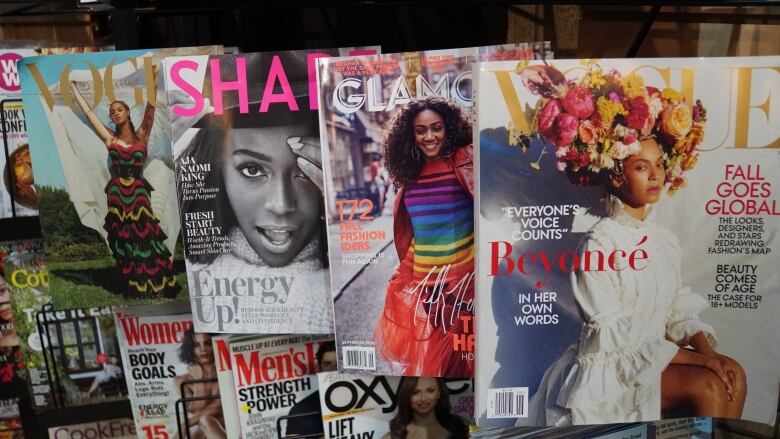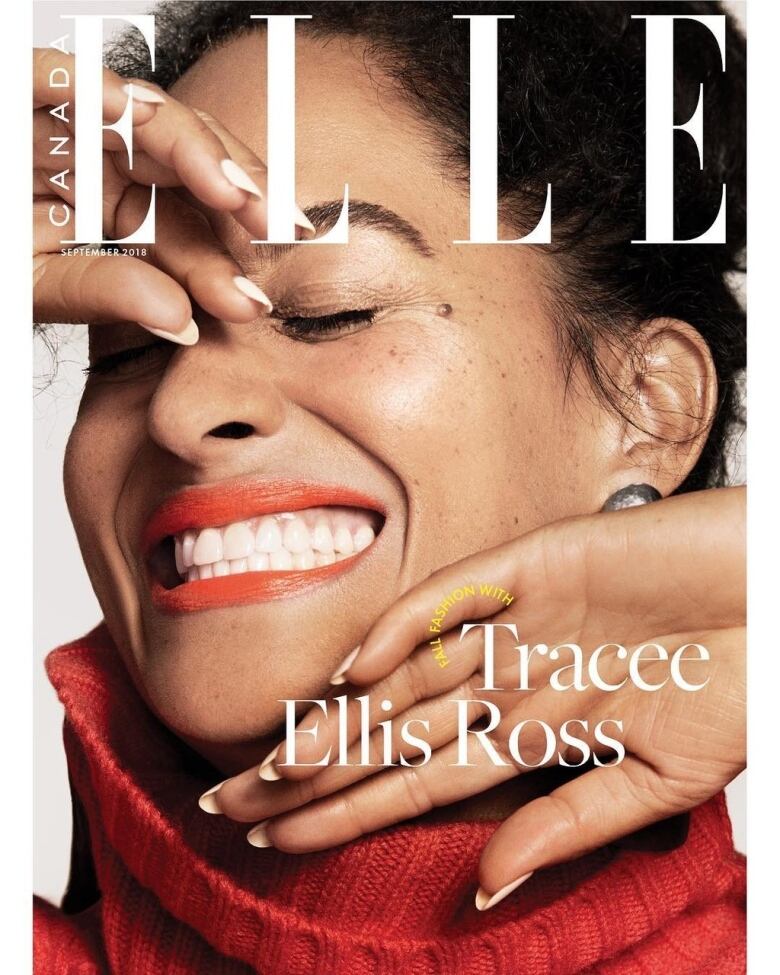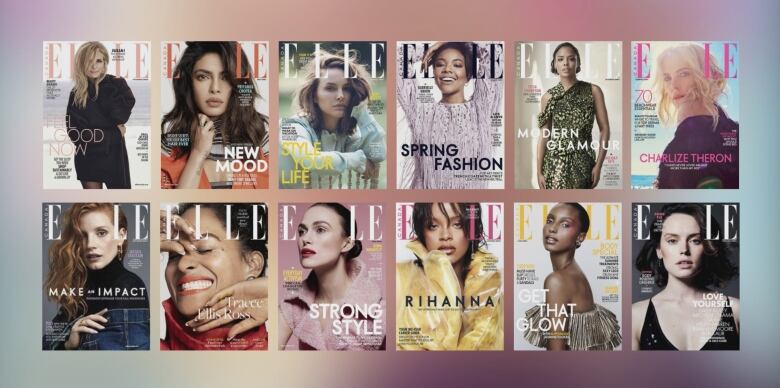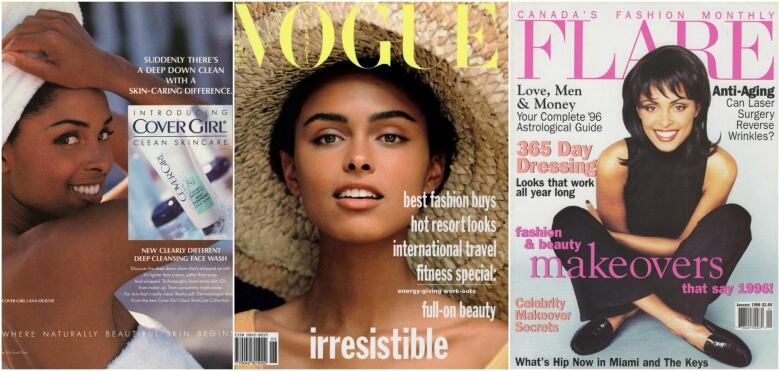Beyonc, Rihanna, Nyong'o, Haddish why black women are owning September fashion magazine covers
My goal 'is to connect with women,' says Elle Canada editor. 'Why would I exclude anyone from that?'

A goodbye to summer, the return to school and the herald of a new sartorial season September has long signalled a new year for fashion magazines. The September issue, in which editors predict and showcase the hottest trends and must-haves, is like the Super Bowl or the Oscars: the extravagant product of a year-long effort, driven by advertising.
But this year, September is looking a lot different on newsstands.
Black women are on the covers of titles such as Vogue, Elle, Glamour and Marie Claire. Beyonc, Rihanna, Lupita Nyong'o, Issa Rae, Tiffany Haddish: these are the faces ushering in the fall season overturning prior notions about what sells magazines and in the hopes of luring in a new, wider and more diverse readership.
September Issue Cover Girls:
Rihanna
Beyonc
Zendaya
Tracee Ellis Ross
Lupita Nyongo
Yara Shahidi
Issa Rae
Aja Naomi King
Tiffany Haddish
Slick Woods
Black women are OWNING these September covers. BLACK GIRL MAGIC!!! pic.twitter.com/eK2zDokRPU
—@MEENAVOGUEE"When I first started, 21 years ago, I was told that it was hard for me to get onto covers of magazines because black people did not sell," Beyonc writes in a piece accompanying her Vogue September 2018 cover.
"Clearly that has been proven a myth. Not only is an African-American on the cover of the most important month for Vogue, this is the first ever Vogue cover shot by an African-American photographer."
Elle Canada is also part of the club this September, having landed actor Tracee Ellis Ross as its cover girl: a perfect choice, according to editor in chief Vanessa Craft, because the star of hit ABC sitcom blackish is intelligent, successful, an activist and a style icon.

Magazines have had to adapt to a changing landscape, including the gradual awareness that having diverse representations of women and beauty is a smart business decision, according to Craft.
AtElle Canada, the strategy has included reaching out to women in new ways, such as through Instagram or interactive events, and boosting representation, starting with the cover.
Of its past 12 issues, half featured a woman of colour on the cover. The May 2018 issue, for instance, was fronted by Indian actor Priyanka Chopra and sold 20 per cent more than Elle Canada's May 2017 issue.

"It's good business to involve as many people as possible in the stories you are trying to tell," Craft said in Toronto.
"My goal as an editor in chief of a fashion magazine is to connect with women. So why would I exclude anyone from that story?"
The changing face of magazines
For the September 2018 cover, Vogue editor Anna Wintour handed the reins over to Beyonc, giving the pop star an unusual amount of authority. Not only did Bey help choose what she wore and who photographed her (23-year-old Tyler Mitchell) for what is now her seventh time fronting an issue of Vogue, she also opted to speak "in her own words" rather than sit for a traditional feature.
"Who is better to write about Beyonc than Beyonc," Wintour said in an interview withthe Business of Fashion blog.
Meanwhile, on the other side of the Atlantic, there's Rihanna: the first black woman in British Vogue's 102-year history to be the face of its September issue.
The idea that black faces don't appeal to readers is an outdated notion, according to Brent Poer, a New York-based executive for marketing firm Zenith.
He saidblack women have proven they not only can sell magazines, but are cultural influencers.
They are incredibly powerful women who are shaping culture ... They deserve to be put front and centre like anybody else.- Brent Poer, Zenith
"It used to be that white women with blond hair and blue eyes were seen to sell more magazines," he said.
But from Beyonc's headline-making performances at Coachella to the blockbuster sales of Rihanna's Fenty beauty line to Tiffany Haddish's scene-stealing in Girls Trip and at the Oscars, these women are "changing the way we think about entertainment, the way we think about pop culture, the way that we engage with brands," Poer said.
And it's a world where celebrity endorsement has more power than ever before, he said.
"These women that you see on the covers, they are incredibly powerful women who are shaping culture, that are doing dynamic and amazing things. They deserve to be put front and centre like anybody else."
Fad or shifting tide?
Canadian supermodel Lana Ogilvie the first black woman to sign a multi-year contractwith CoverGirl cosmetics in 1992 and who has been featured on the covers ofVogue, Flare, Fashion and many other publications has seen and contributed to changes in the fashion magazine industry.
The Toronto-born model hopes what we see on newsstands this September isn't a fad or one-off;she wants representation to continue and expand.

"There's a lot more to diversity than black and white. Why are there not more [Latina]women on the cover ... or Asian women? Or Persian women?" she said from NewYork.
The world is changing, she says, and magazines need to change with it or get left behind.
Plus, with the rise of social media, consumers now also have newfound power to speak up and hold their favourite titles accountable.
"If you want to sell, you need to represent the people who you want to buy your product," she said.
"Speaking up, especially on social media, about what you want to see ... Magazines arenoticing that. People are noticing that. Advertisers are noticing that."












_(720p).jpg)


 OFFICIAL HD MUSIC VIDEO.jpg)
.jpg)



























































































